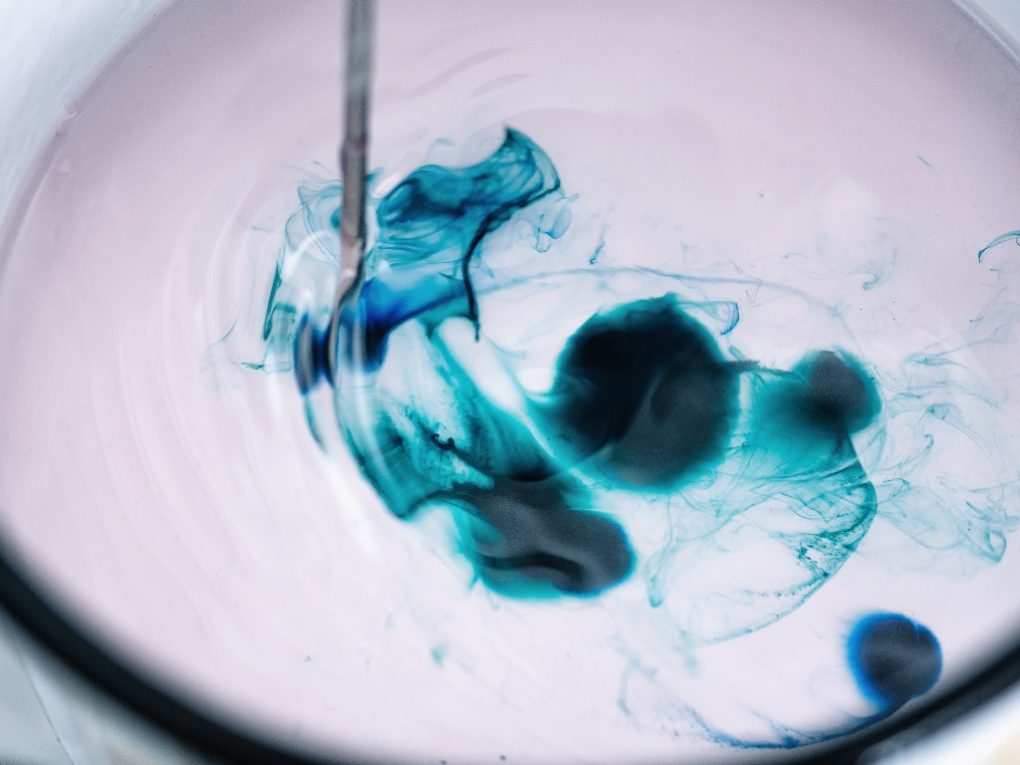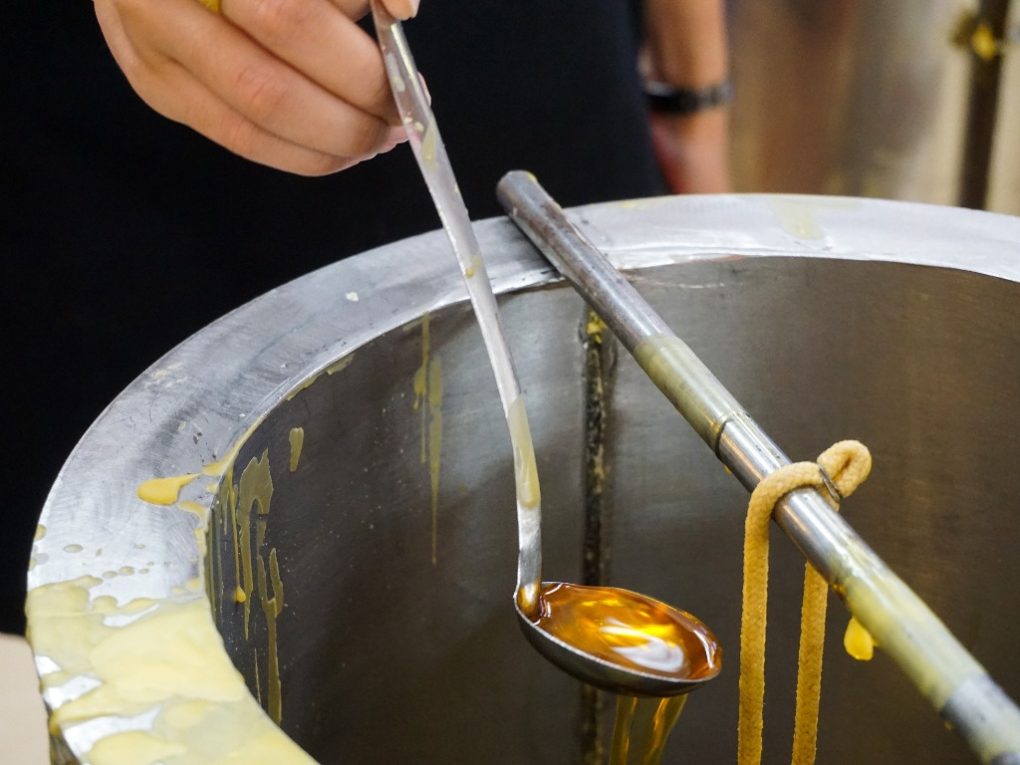Why Is My Candle Wax Not Hardening: Possible Causes and Solutions
One of the most common reasons why candle wax does not harden is the use of too much fragrance oil. Candle wax can only contain a certain amount of oil before it becomes too saturated and unable to solidify. Another reason may be expired wax or a poor fragrance oil mixture. Additionally, temperature plays a crucial role in the hardening process.


Fortunately, there are ways to troubleshoot and fix this issue. Pouring the wax at a lower temperature can help reduce crystal formations that form once the wax hardens. Allowing the candle to cool at room temperature in a draft-free space can also help. Understanding the causes of candle wax not hardening and implementing preventative measures can help ensure that your candles turn out perfectly every time.
Temperature
Temperature is a critical factor in candle making. It can affect the candle wax’s consistency, texture, and appearance. Here are two sub-sections that discuss the role of temperature in candle making:
Pouring Temperature
The pouring temperature is when the melted wax is poured into the container. If the wax is poured at a temperature that is too high or too low, it can affect the quality of the candle. If the wax is poured at too high a temperature, it can cause the candle to have sinkholes or cracks when it cools. On the other hand, based on experience, if the wax is poured at too low a temperature, it can cause the candle to have a rough or uneven surface.
The ideal pouring temperature can vary depending on the type of wax used. For example, soy wax is typically poured at a temperature between 110°F and 135°F, while paraffin wax is typically poured at a temperature between 160°F and 180°F. Following the manufacturer’s instructions for the specific wax being used is essential.
Room Temperature
The room temperature also plays a crucial role in candle making. If the room temperature is too high, it can cause the candle to have a soft or sticky texture, making it difficult to remove from the mold or container. On the other hand, if the room temperature is too low, it can cause the candle to have a rough or uneven surface.
The ideal room temperature for candle making is between 70°F and 76°F. It is essential to work in a space free from drafts and to avoid working in a room with high humidity. If the room temperature is too high, it is recommended to use air conditioning or a fan to lower the temperature.
Wax Type
The type of wax used can play a significant role in whether or not your candle wax hardens. Different types of wax have different melting points and cooling rates, which can affect the outcome of your candle.
Paraffin wax, for example, has a lower melting point and can be more susceptible to melting in warmer temperatures. On the other hand, soy wax has a higher melting point and can be more resistant to melting in warmer temperatures.


It is important to choose the right type of wax for your candle-making needs and to follow the manufacturer’s instructions for heating and cooling the wax. Using the wrong type of wax or not following the instructions can result in candles that do not harden properly.
Fragrance Oil
One of the reasons candle wax may not harden is the use of too much fragrance oil. While fragrance oil is essential to candle making, too much can cause problems. When too much fragrance oil is in the mixture, the wax and oil may not bond properly. Wax can only bond to a certain percentage of oil, known as the “load.” Over this limit can cause the wax to remain soft and not harden.
Using the correct fragrance oil in your candle-making is important to avoid this problem. A good rule of thumb is to use no more than 10% fragrance oil in your wax. Using more than this can cause the wax to become too soft, and the candle may not burn properly.
Another factor to consider is the quality of the fragrance oil. If the oil is old or expired, it may not mix properly with the wax. Therefore, using high-quality fragrance oils specifically designed for candle-making is important.
Lastly, the type of fragrance oil used can also affect the hardening of the wax. Some fragrance oils are heavier than others and may require a higher melting point to mix properly with the wax. Therefore, it is important to choose fragrance oils compatible with the wax type being used.
Dye
One common issue candle makers may face is when the dye does not mix properly with the wax, resulting in uneven coloring or clumps of dye settling at the bottom of the candle. This can be frustrating, especially when trying to achieve a specific color or aesthetic for the candle.


One reason for this issue could be the type of dye being used. According to Science Direct, some dyes, such as food coloring, contain additives that prevent them from properly bonding with the wax. This can cause the dye to sink to the bottom or bead up on the wax, resulting in uneven color.
Another reason could be the temperature at which the dye is added to the wax. If the wax is too hot, the dye may not mix properly and clump together. On the other hand, if the wax is too cool, the dye may not disperse evenly throughout the wax.
To avoid this issue, candle makers can use dye specifically made for candle making, designed to bond properly with the wax. It is also important to add the dye at the correct temperature, typically around 180-185°F for soy wax and 190-200°F for paraffin wax. Additionally, stirring the wax thoroughly after adding the dye can help ensure an even color throughout the candle.
Wick Size
One of the most common reasons candle wax does not harden is the wick size. If the wick is too small, it will not be able to melt the wax evenly, causing the wax to pool around the wick instead of burning evenly. On the other hand, if the wick is too large, it will burn too quickly and create a lot of heat, which can cause the wax to melt too quickly and not harden properly.


It is important to choose the right size wick for the diameter of the candle. For example, a wick that is too small for the candle will not be able to melt the wax properly and will result in a poor burn, while a wick that is too large will create too much heat and melt the wax too quickly.
When selecting a wick, consider the diameter of the candle and the type of wax being used. Different waxes require different wick sizes, so it is important to research before selecting a wick. In addition, many candle-making suppliers provide wick recommendations for their specific wax types.
Container Size
The container size you use to make your candle can also affect whether or not the wax will harden properly. The wax may not reach the appropriate solidifying temperature if the container is too large. On the other hand, if the container is too small, the wax may overheat and become too hot to solidify.
It’s important to choose a container that is appropriate for the amount of wax you are using. For example, a general rule of thumb is to use a container about one inch wider than the diameter of your candle. For example, if your candle is three inches in diameter, you should use a container about four inches in diameter.
Another factor to consider is the depth of the container. The wax may take longer to cool and solidify if the container is too deep. This can result in a soft or mushy candle in the center. To prevent this, choose a shallow container to allow the wax to cool evenly.
Stirring
Stirring is essential to candle making and can affect how well your candle wax hardens. If you don’t stir the wax enough, you can end up with uneven melting and burning, and the wax may not cool evenly, leading to sinkholes or other problems. On the other hand, if you stir the wax too much, you can introduce air bubbles, which can also affect the overall quality of your candle.


When you stir your candle wax, it’s essential to do it gently and consistently. Use a heat-resistant spoon or spatula to stir the wax slowly and carefully, scraping the sides and bottom of the container to ensure even melting. Avoid stirring too vigorously, which can introduce air bubbles and cause the wax to cool unevenly.
It’s also important to stir your wax while it’s heating to ensure that fragrance oils or other additives are evenly distributed. For example, if you add fragrance oils after the wax has cooled, they may not mix properly, which can affect the overall quality of your candle.
Cooling
One of the most common reasons candle wax does not harden is improper cooling. When the wax cools too quickly or slowly, it can result in various issues, including sinkholes, cracking, and adhesion problems. Here are some tips to ensure proper cooling:
- Allow enough time for the candle to cool completely before moving it. Rushing the cooling process can cause the wax to crack or pull away from the container.
- Avoid placing the candle in a drafty area or near a vent. This can cause uneven cooling and lead to adhesion issues.
- If you are making container candles, try preheating the containers before pouring the wax. This can help the wax cool more evenly and reduce the risk of adhesion problems.
- Consider using a cooling rack or another device to help the candle cool evenly. This can be especially helpful if you make pillar or other non-container candles.
Following these tips, you can help ensure your candle wax cools properly and hardens to a beautiful finish.
